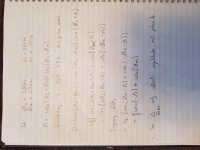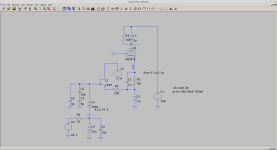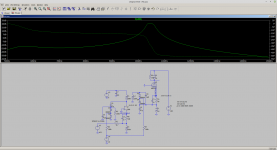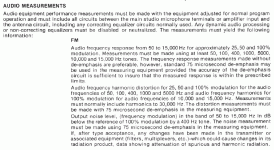Leakage of the LO into the composite audio shouldn't be a problem in the first place. It's not a correct design. It should block everything from 23KHz upwards, the entire difference signal. If you don't do that it will sound frightful in mono.
The LPF and other notations apply to what's above them, not below.
The LPF and other notations apply to what's above them, not below.
I think such a circuit it will be difficult to get the phase of the 38KHz correct due to the number of high Q tuned circuits. This will make getting a reasonable channel separation difficult. I guess a valve PLL is just too tricky.
Why? It's done all the time with transistor decoders, and there are plenty of working valve MPXs out there too.
And getting the 38KHz out of phase just reverses the channels. It doesn't compromise channel separation.
And I don't know why everybody keeps talking about PLLs. There is no phase-locked loop here, and none required in a valve FM tuner.
And getting the 38KHz out of phase just reverses the channels. It doesn't compromise channel separation.
And I don't know why everybody keeps talking about PLLs. There is no phase-locked loop here, and none required in a valve FM tuner.
Last edited:
I don't know without doing the maths so cannot answer that. It may well be OK. I may be thinking of SSB rather than DSB which the L-R component is.
Last edited:
Mono FM had a great signal to noise at really low microvolts of RF.
And it had very nice low distortion . . .
Then along came stereo FM.
And it had very nice low distortion . . .
Then along came stereo FM.
Mono FM had a great signal to noise at really low microvolts of RF.
And it had very nice low distortion . . .
Then along came stereo FM.
Mono FM also had a 30 Hz. to 20 KHz. bandwidth. The original channel allocations for TV implemented that mono FM standard, for audio. MPX stereo brought the upper limit down to 15 KHz.
Maintaining compatibility with older, mono only, equipment drove the implementation of the selected compromise. AM/FM "simulcast" stereo had proved unsatisfactory, from several perspectives. Introducing stereo to phonographs, while maintaining compatibility for older equipment, proved simpler than it was for broadcasting.
Then came along old age which brought the frequency response of 15KHz down to 12KHz. Actually if your prepared to digitally decode the MPX signal there's quite a lot you can do. You can vestigial filter the DSB signal removing much of the upper L-R sideband and the some of the triangular noise etc. You can even do the FM demodulation digitally.
Last edited:
And the lower frequency limit on FM radio in the US is 50 Hz.
Sorry, the electric bass guitar goes down to 41Hz.
There is not a signaling technique that can not be 'improved' in the name of progress.
And do not ask about the "improvements" on AM broadcasting in the US as time marched on.
Sorry, the electric bass guitar goes down to 41Hz.
There is not a signaling technique that can not be 'improved' in the name of progress.
And do not ask about the "improvements" on AM broadcasting in the US as time marched on.
Last edited:
Why? It's done all the time with transistor decoders, and there are plenty of working valve MPXs out there too.
And getting the 38KHz out of phase just reverses the channels. It doesn't compromise channel separation.
And I don't know why everybody keeps talking about PLLs. There is no phase-locked loop here, and none required in a valve FM tuner.

Thanks for a DSSC having a phase error just reduces the amplitude of the L-R signal - so its not that critical. Did not know that.
Sorry, I was referring to a phase reversal. A small phase difference will indeed reduce separation.
Really? Why? There is no inherent reason why it can't go down to DC. It doesn't cost anything like it does when transmitting AM, and it doesn't change the bandwidth required. Are you sure you aren't thinking of AM?And the lower frequency limit on FM radio in the US is 50 Hz.
I thought that the FCC requirement for FM broadcasting was 50Hz - 15kHz +/-1dB and operation below 50Hz is permitted with 30Hz being somewhat the typical lower limit. There is no limit on LF extension but concerns about wasting modulation bandwidth on signals most stereos will not reproduce would be a concern.
There are similar requirements for stereo separation IIRC, and definitely WRT overmodulation and accidentally exceeding your allocated channel bandwidth. (200kHz)
I was briefly interested in FM broadcasting in college, and that is what I remember, but I cannot corroborate it. Google isn't always your friend apparently.
There are similar requirements for stereo separation IIRC, and definitely WRT overmodulation and accidentally exceeding your allocated channel bandwidth. (200kHz)
I was briefly interested in FM broadcasting in college, and that is what I remember, but I cannot corroborate it. Google isn't always your friend apparently.
I don't think that is quite true, the total resulting deviation is the sum of the amplitude of all instantaneous signals present and you cannot deviate more than +/-75kHz from carrier center. Why transmit LF that won't be reproduced at the other end if its instantaneous amplitude uses a significant portion of the available modulation depth?
FCC needs test to 50Hz. You can do more if you want.
Back in the dawn of FM there were Phase Shift Modulators. This was easy in treble but needed a very long chain of shifters to do bass. So you would practically be limited how low your specific rig would go. Being diminishing returns, it was not wise to over-provision the shift.
Back in the dawn of FM there were Phase Shift Modulators. This was easy in treble but needed a very long chain of shifters to do bass. So you would practically be limited how low your specific rig would go. Being diminishing returns, it was not wise to over-provision the shift.
- Home
- Amplifiers
- Tubes / Valves
- Valve FM receiver


